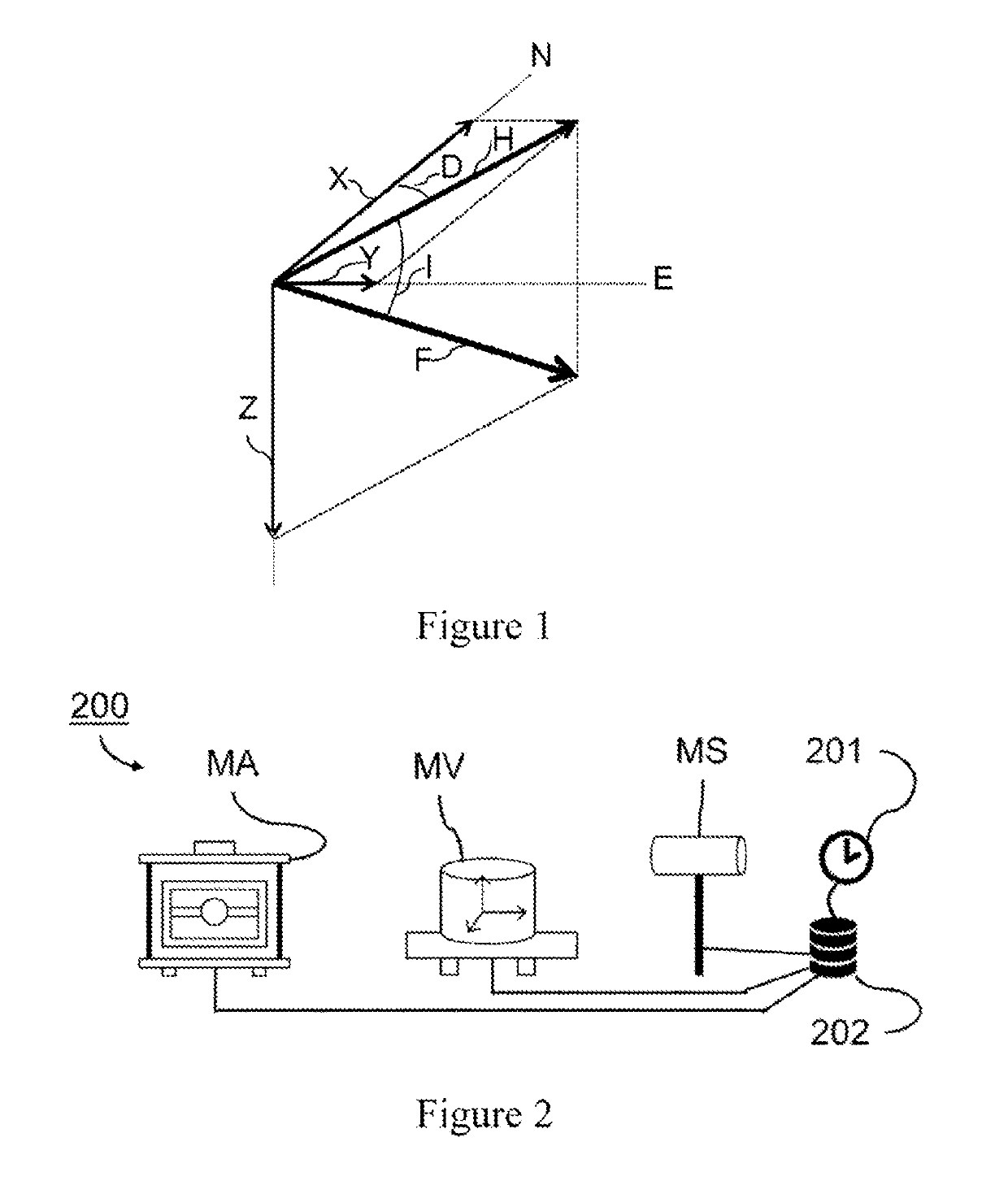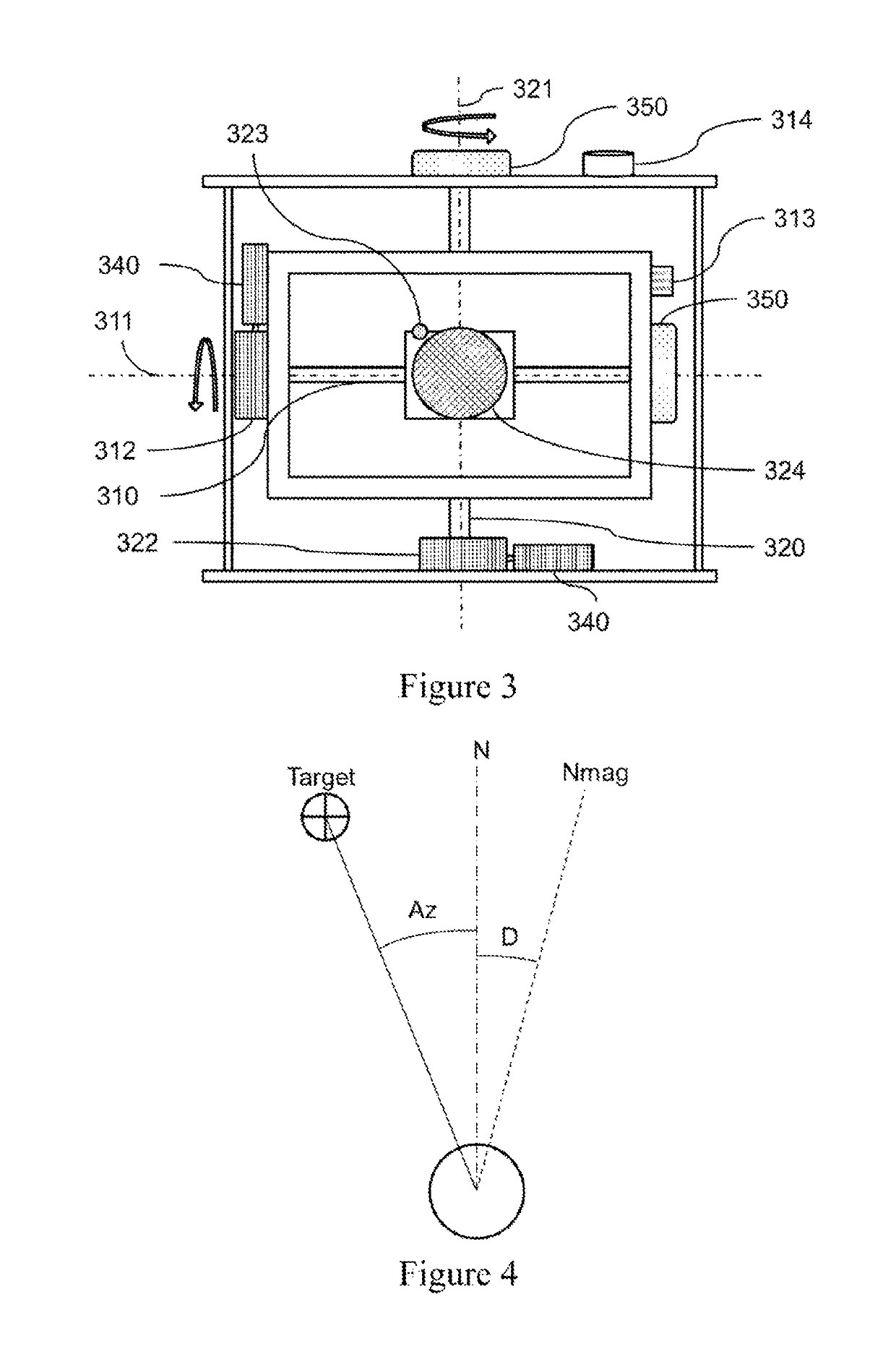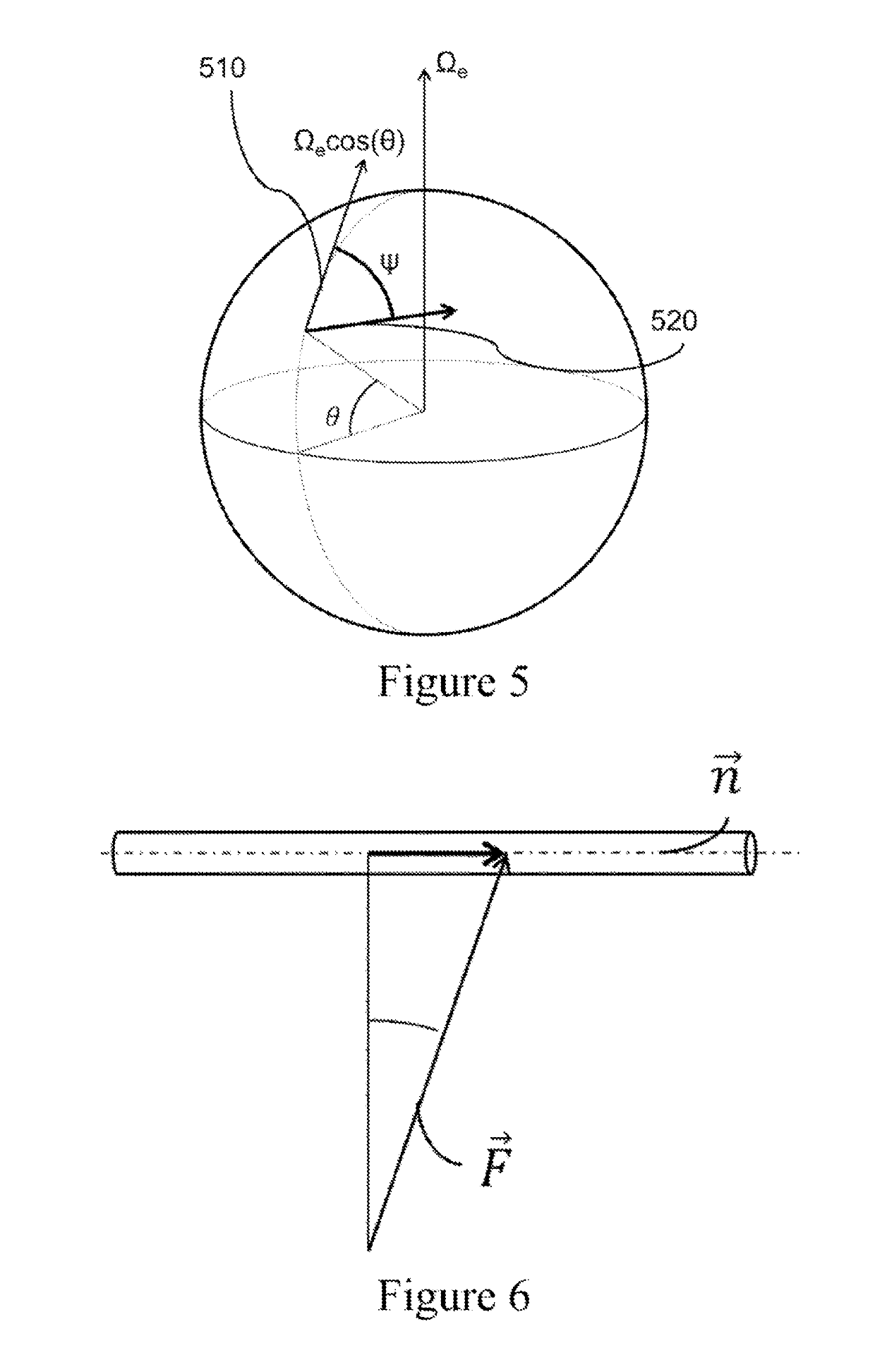Self-calibrating and autonomous magnetic observatory
a self-calibration and magnetic observatory technology, applied in the field of magnetic observatories, can solve the problems of not providing the vertical of the site, nor the direction of geographic north, and not providing the direction of the geographic north, so as to achieve the effect of improving the quality of the measuremen
- Summary
- Abstract
- Description
- Claims
- Application Information
AI Technical Summary
Benefits of technology
Problems solved by technology
Method used
Image
Examples
Embodiment Construction
[0051]FIG. 1 shows an example of a local terrestrial magnetic field vector, referred to as the local magnetic field vector {right arrow over (F)} below, and its decomposition into various mathematically independent components. Since the local magnetic field {right arrow over (F)} is a vector field, knowledge of its magnitude is not enough to completely characterize it. Specifically, it is necessary to define its orientation with respect to reference directions. These reference directions are preferably the local vertical (or, equivalently, a horizontal plane) and the direction of geographic north N. The magnetic declination “D” is then defined as being the angle between the geographic north N and the projection of the magnetic vector into a horizontal plane. The magnetic inclination “I” is defined as being the angle between the horizontal plane and the magnetic vector in a vertical plane containing this vector.
[0052]In Cartesian coordinates, XYZ, X points toward geographic north N, ...
PUM
 Login to View More
Login to View More Abstract
Description
Claims
Application Information
 Login to View More
Login to View More - R&D
- Intellectual Property
- Life Sciences
- Materials
- Tech Scout
- Unparalleled Data Quality
- Higher Quality Content
- 60% Fewer Hallucinations
Browse by: Latest US Patents, China's latest patents, Technical Efficacy Thesaurus, Application Domain, Technology Topic, Popular Technical Reports.
© 2025 PatSnap. All rights reserved.Legal|Privacy policy|Modern Slavery Act Transparency Statement|Sitemap|About US| Contact US: help@patsnap.com



